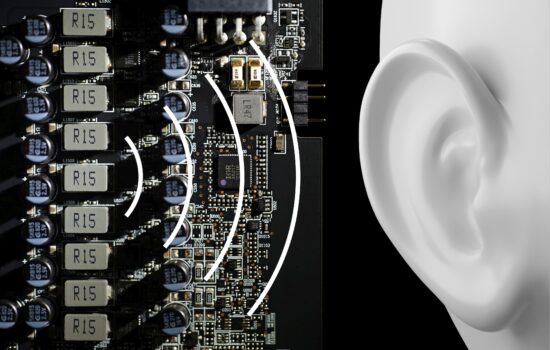Asus TUF Gaming TR120 ARGB
It’s evident from the design of the new TUF Gaming TR120 fan that Asus has diagnosed the weaknesses of its predecessor (and, from the current perspective, weaker model) well and worked on them with a view to achieving better results. These key changes are also easy to point out, and it’s likely that across all possible scenarios this will be one of the most aerodynamically efficient LED fans in the 120mm format.
Last time it really worked out for Asus with an ARGB fan. It’s hard to say how successful it was in terms of sales, but the TUF TF120 really stood out due to its low price. And it’s clear that there was a decision inside Asus to push it even further. The ways of “how” it was done are quite evident from the partial design elements as well.
The first detail that has the potential to increase the airflow through obstacles (and Asus is probably mainly concerned with radiators of AIO coolers…) is the increase of the thickness to 28 mm (from the original 25 mm of the TUF TF120). This will primarily increase the static pressure, which is advertised at 3.3 mm H2O. This is admittedly at zero airflow, and the situation on the radiator will be somewhat different, less restrictive, nonetheless there will be an improvement in this regard in terms of cooling performance. Although it is true that this is somewhat at the expense of worse compatibility than is the case with thinner fans.
The extra thickness would not be of much use to the fan if it was not based on an efficient impeller geometry. There is some similarity to the TF120 in this regard, except the blades of the new TR120 are wider (with smaller gaps between them), a modification that could have an impact on both airflow (up to 131.5 m3/h at 2000 rpm) and static pressure (which Asus claims is up to 32% higher than the previous fan with ARGB).
The airflow per unit of noise was already high with the TF120, but that’s only in a rather impractical situation. Even though without an obstacle the older Asus ARGB fan (TF120) was positioned above the Arctic P12 A-RGB, on a radiator at a comparable noise level, it already ended up below it (the P12 A-RGB).
The measures Asus has now taken could put the TR120 ahead of the competing Arctic fan. In theory, of course. At the same speed, the TR120 will achieve a higher airflow than the TF120 for sure, but the question is what the differences in noise will be.
Given that the Asus fan blades look quite robust (they are relatively shorter and they are also wider), we can assume that they will not be a source of vibrations and excessively noisy critical sound frequencies. We’ll find out how this really is only from the tests though, which probably won’t leave us waiting long. An Asus representative has already announced that new fans are in the pipeline and we assume that there will be interest in seeing how they perform compared to competing solutions.
The TUF Gaming TR120 fans have fully illuminated impellers (with sixteen LEDs) and Asus has also brought some of the light guides out from the side, along the height of the fan. The walls of the frames are “leaky”. But they are tight, the inner tunnel shroud has no static-pressure-reducing holes around the blades.
In addition to single unit sales, triple-packs will also go into stores. Within them, the fan will probably be cheaper per piece, but we won’t tell you exactly how much or when the TUF TR120 will be in stock, we don’t know at the moment.
English translation and edit by Jozef Dudáš
- Contents
- Asus TUF Gaming TR120 ARGB














